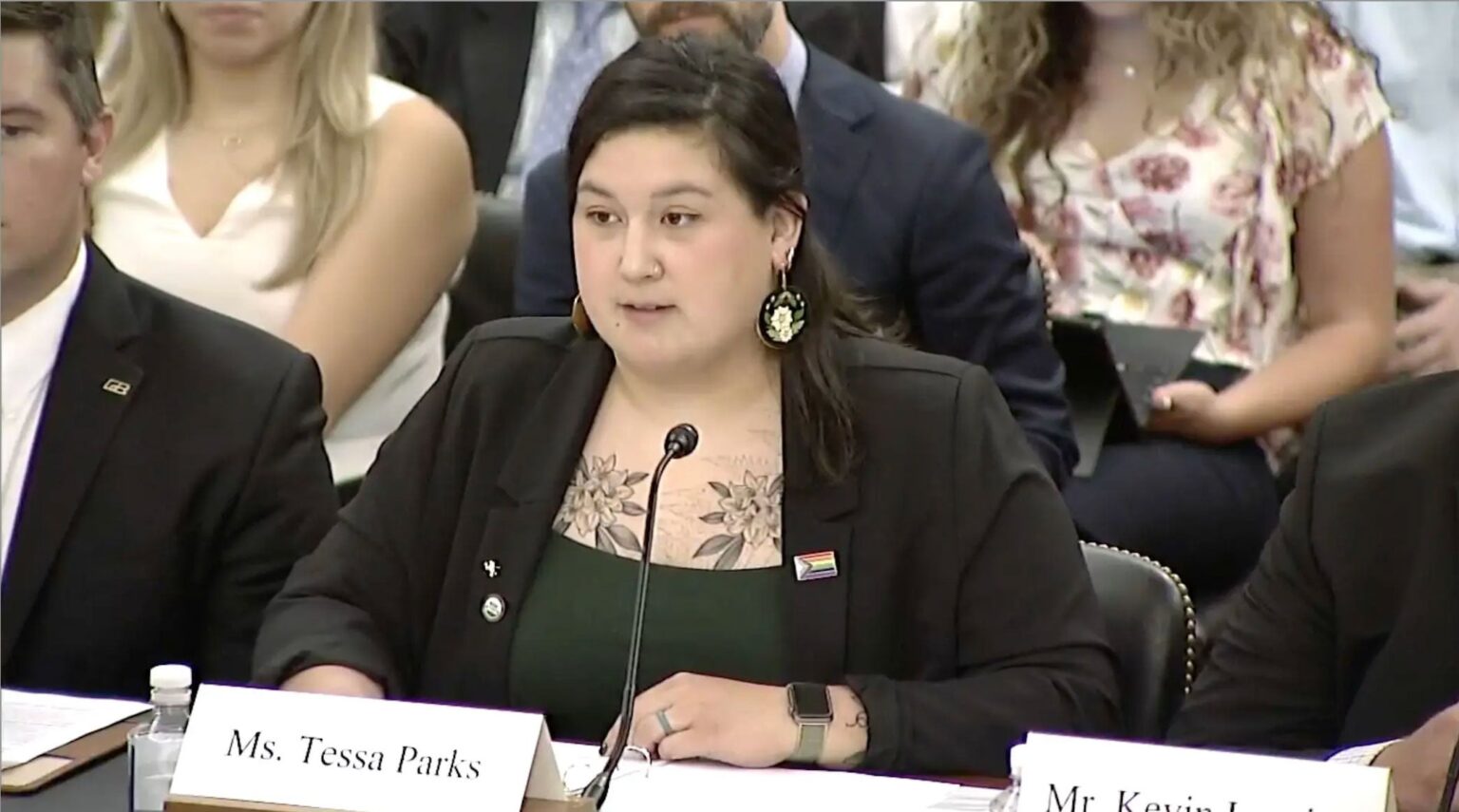Young producers may earn a seat at the table because of their age, but age is arguably the least of their concerns while advocating.
BRUSSELS, Belgium — Peter Meedendorp balances his potato, sugar beet, onion, and corn operation while attending policy meetings with ministers and presidents — the most influential figures in his government.
At just 23 years old, Meedendorp is often the youngest person in the room, providing a crucial voice for young farmers. A university graduate with a background in agricultural economics and international relations, he began farming with his family after university and aims to take over the farm in the future.
Advocating for land and knowledge access spans a range of emerging voices, including recent graduates and those classified as “young farmers” in Europe — a designation that extends up to 45 years old in some countries.
Meedendorp, from the Netherlands, is president of the European Council for Young Farmers (CEJA), an organization representing 2 million farmers and 33 national member organizations across the Europe. After serving in his national youth organization, the Dutch Agricultural Youth Contact (NAJK), he rose to CEJA’s leadership during a critical policy negotiation period.
He divides his time between the farm and Brussels, one of the EU’s key policy centers, where agricultural decisions are made. CEJA wields significant influence in Brussels, shaping agricultural policy.
Founded in 1958, CEJA gained momentum and secured a seat at the negotiating table when young voices rose to prominence during multiple waves of environmental protests in 2019. These demonstrations were tied to the European Green Deal, a legislative effort approved in 2020 that pushes for climate action.
Young farmers strategically used this moment to insert themselves into policy discussions, ensuring their representation during the 2021 negotiations for the Common Agricultural Policy (CAP), the EU’s farm policy legislation, equivalent to the U.S. farm bill.
The result was a young farmer at the table. As CEJA president, Meedendorp speaks at forums, attends diplomatic events alongside agriculture ministers and European Commission officials, and serves as a key voice on the global stage.
He may be the youngest voice in the room, but his seat at the table is anything but small.

Young European farmers’ close ties to policymakers reflect both the strength of the youth movement in Europe and the EU’s extensive, multi-voice policy process.
The role of young farmers in Europe’s agricultural future
Young farmers worldwide face similar challenges — not just those tied to age but to beginnings. Starting fresh in agriculture means navigating the growing pains of learning one of the most complex professions: growing food to feed others, ideally profitably.
For CEJA, its goal is to minimize the obstacles young people face when they decide to set up in agriculture.
Marion Picot, CEJA’s director general, said, “Access to land, finance, and investment, access to knowledge and education, difficulty in having a stable income, but also creating attractiveness to rural areas that are not always up to the standards of the new generations” are all challenges the organization tackles.
Europe has a 27 percent share of citizens living in the rural countryside, compared to the United States with 12 percent, one Congressional Research Service report notes.
The organization estimates that, in 15 years, one-third of the farming population will retire, creating a significant labor gap that must be filled to sustain food production.
“Before we were able to really place young farmers on the agenda, we had to go through a lot of convincing older generations,” she said. A task like this, difficult for young farmers in Europe, when only 12 percent of those farmers under 40 years old currently have a farm under their management.
Across the globe, the exact definition of young and old farmers, along with the average age, is not always clear, however the generational transition deficit that they face is.
EU legislation as written includes, “The age of 40 years old is the maximum age to be considered a young farmer,” Picot said. However, some countries’ organizations define a young farmer as under 45 years old.
To reach the average age of a farmer in Europe, one celebrates 57 years of age, and in America, 58. Both government bodies gathered in May 2023 to discuss Intergenerational Farm Issues through the Collaboration Platform on Agriculture, an opportunity for the U.S. and EU agriculture leaders to meets annually.
To be labeled “old” doesn’t make you a minority in agriculture — it just highlights one of the many hurdles that make generational renewal a pressing issue.
In the United States, the American Farm Bureau Federation defines a young farmer as 18 to 35 years of age, which qualifies them to be involved in their Young Farmers and Ranchers programs. The Young Farmer Coalition in the U.S., exists as a grassroots organization, and it defines “young” as being from 18 to 40 years old in order to apply for organizational grants.
In Wales and Scotland, the National Farmers Union young membership is up to 27 years old. And the developing world has a different age range with the average age of a farmer being 34, according to the International Fund for Agricultural Development.
Permanent seat at the table
For U.S. farmer Tessa Parks, “40 still feels young in this industry.”
Parks raises hay, cattle, and does custom farming in a southern Minnesota community with her partner. She is a local leader in her county chapter of the National Farmers Union, in addition to being a frequent visitor to the nation’s capital, testifying in front of U.S. senators in summer 2024.
Her testimony went before the Senate Agriculture Committee’s Subcommittee on Commodities, Risk Management, and Trade, as she spoke during a hearing titled, Pathways to Farming: Helping the Next Generation of Farmers.
Parks, 29, like many others, said that even though we use the word “young,” what she ends up advocating for applies to farmers across different stages of their careers — whether they’re entering or returning to agriculture.
She recalled being on a panel when she “was the only one that was 100 percent renting ground, who didn’t grow up farming, and who didn’t have that kind of foundational knowledge or experience.”
“Someone who’s a sixth-generation farmer can still be a beginning farmer in a lot of ways, because there’s so much to learn in farming,” said Parks.
Parks points to land transitions as one of the biggest challenges, along with the difficulty of managing rented land relationships. Coming up on her fifth year of farming and improving profitability at WT Farms, Parks is excited to be a part of the policy conversation, influence it, and tell her story.
However, that has come with time. Each year, her operation must decide its direction, what markets to sell their hay to, and how to take the next step toward a goal of transitioning to organic beef.
As WT Farms manages rental acreage, their advocacy skills and training were spoken into existence.
“We just got confirmation the other month that one of our landlords is open to finding a way forward for a land transition,” she said
With a background in chemistry, experience at a conservation organization, and a part-time role in farming alongside her full-time partner, she recognizes the power of sharing one’s truth through lived experiences.
“I want to advocate for myself, but also others that look like me and identify like me,” Parks said. “Advocacy allows someone who lived in a town of less than 300 people, to end up on Capitol Hill.”
Producers across the globe realize their age is the least of their concern when advocating for a seat at the government table, even though it might be the reason they have the chair.
Parks’ advocacy in the U.S. is strong — she’s unafraid to speak her mind on issues affecting her farm and family. However, permanent seats at the policy table for younger, beginning farmers remain limited.
In the U.S., there are few nationwide organizations solely focused on advocating for young farmers with significant permanent influence and presence in Washington, D.C. With numerous policy actors in the capital, gaining the attention and time of elected leaders can be a challenge.
In contrast, Europe’s CEJA is entirely dedicated to advancing young farmers in the continent’s government. CEJA holds a seemingly permanent seat at the table with government leaders, making it one of the few agriculture organizations with such direct access to policymakers.
Reflecting on this challenge, Parks observed, “Older generations take up so much space in the conversation, even though younger farmers will be the ones running operations a few decades from now.”
When farmers such as Meedendorp and Parks secure a seat at the table, the agriculture sector listens. Through their respective organizations, they work to ensure others have the same opportunity.
Regardless of experience, age, or status, Parks said, “I am just as much of a farmer as anyone else in the room — even if they are twice my age.”
This is the second in a four-part series of on-the-ground reporting from Europe, exploring the demands of consumers, the actions of policymakers, and the perspectives of agricultural producers working within the diverse, parliamentary framework of the European Union.
Jake Zajkowski is a freelance agriculture journalist covering farm policy, global food systems and the rural Midwest. Raised on vegetable farms in northern Ohio, he now studies at Cornell University.


